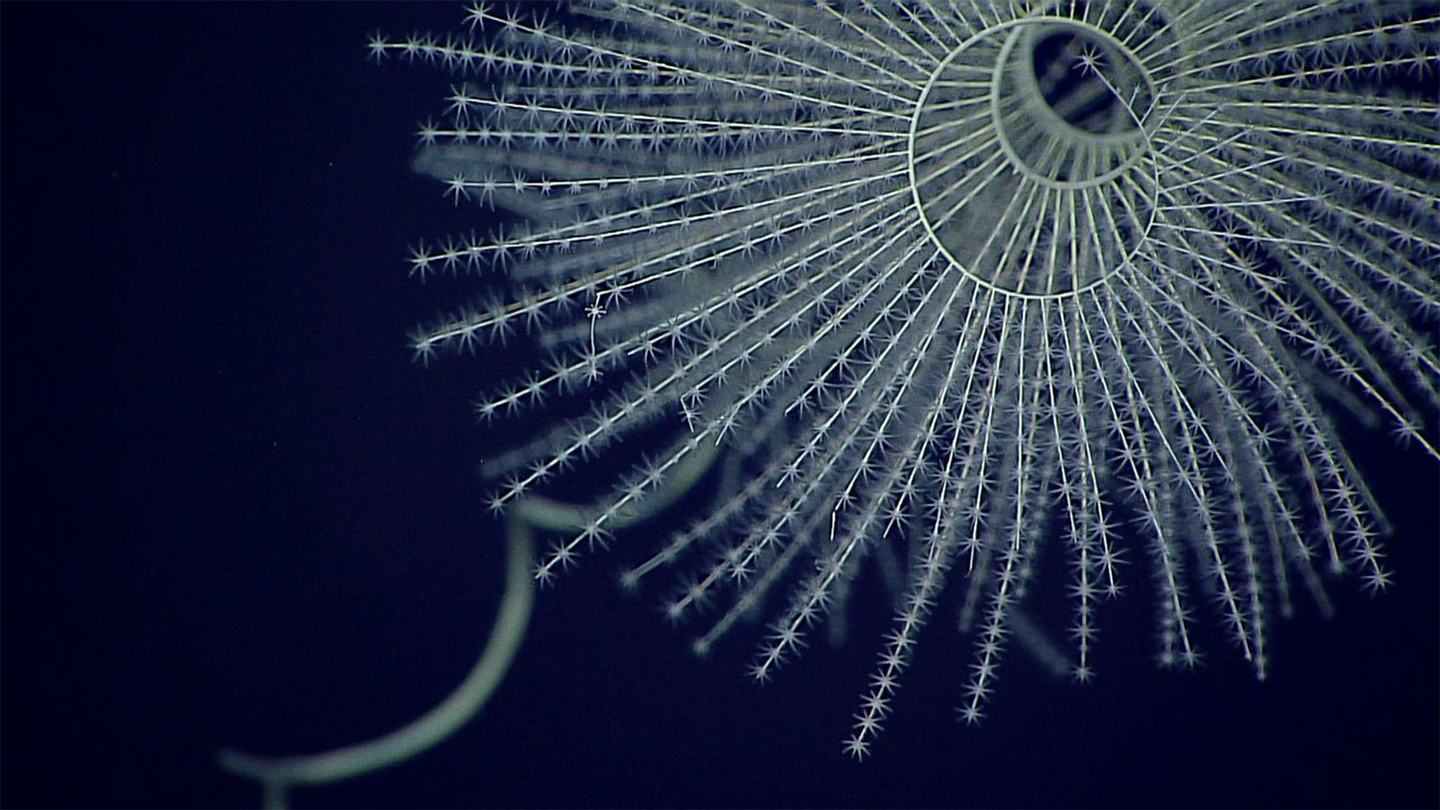Bioluminescence may have evolved 300 million years earlier than scientists previously thought
New findings illuminate its origin story.

Many marine organisms–including sea worms, some jellyfish, sea pickles, and more–can emit ethereal glow through a process called bioluminescence. The evolutionary origins of this light production remain a mystery, but an international team of scientists have found that bioluminescence may have first evolved in a group of marine invertebrates called octocorals at least 540 million years ago–nearly 300 million years earlier than they previously believed. This new timeline could help scientists unravel bioluminescence’s origin story. The findings are detailed in a study published April 23 in the journal Proceedings of the Royal Society B.
What is bioluminescence?
Bioluminescent organisms produce light via chemical reactions. This ability has independently evolved at least 94 times in nature. Bioluminescence is involved in multiple animal behaviors including communication, courtship, camouflage, and hunting. Fireflies, glowworms, and even some species of fungi on land are also considered bioluminescent organisms.
“Nobody quite knows why it first evolved in animals,” Andrea Quattrini, a study co-author and the Smithsonian Museum of Natural History’s curator of corals, said in a statement.

The earliest dated example of bioluminescence in animals was believed to be roughly 267 million years ago in small marine crustaceans known for a mucus-filled synchronized mating dance called ostracods, until this new research turned back the clock.
An octocoral evolutionary tree
In the study, the team looked back into the evolutionary history of octocorals to search for clues to when it first appeared in animals. Octocorals are an ancient and frequently bioluminescent group of living animals that includes sea fans, sea pens, and soft corals. Just like hard corals, octocorals are tiny colonial polyps that build up a reef structure, but they are primarily soft bodied and not stony. The octocorals that glow generally light up when they are bumped or otherwise disturbed. According to the team, this makes the precise function of their ability to produce light a bit of a puzzle
[Related: These newly discovered bioluminescent sea worms are named after Japanese folklore.]
“We wanted to figure out the timing of the origin of bioluminescence, and octocorals are one of the oldest groups of animals on the planet known to bioluminesce,” study co-author and Smithsonian National Museum of Natural History postdoctoral scholar Danielle DeLeo said in a statement. “So, the question was when did they develop this ability?”
They turned to a detailed evolutionary tree of octocorals that was built in 2022. This map of evolutionary relationships–or phylogeny–used the genetic data from 185 different species of octocorals. The team then placed two octocoral fossils of known ages within the tree based on their physical features. They were able to use the fossils’ ages and their respective positions in the evolutionary tree to determine roughly when octocoral lineages split apart to become two or more branches. The team ultimately mapped out the evolutionary relationships that featured all of the known bioluminescent species alive today.

With this evolutionary tree and branches that contained bioluminescent species labeled, the team used a statistical technique called ancestral state reconstruction to analyze the relationships between the species.
“If we know these species of octocorals living today are bioluminescent, we can use statistics to infer whether their ancestors were highly probable to be bioluminescent or not,” said Quattrini. “The more living species with the shared trait, the higher the probability that as you move back in time that those ancestors likely had that trait as well.”
Multiple different statistical methods all reached the same result. About 540 million years ago, the common ancestor of all octocorals was very likely bioluminescent. This is about 273 million years earlier than in the ostracod crustaceans that were previously considered the earliest evolutionary example of bioluminescence in animals.
According to the team, the octocorals’ thousands of living species and relatively high incidence of bioluminescence suggests that glowing played a role in the group’s evolutionary success. While this does not exactly answer what octocorals are using bioluminescence for, the fact that it has been retailed for so long shows how important this form of communication has become for their survival.
Conservation implications
Now that the team knows that the common ancestor of all octocorals likely could already produce its own inner glow, they are interested in conducting a more thorough count of which of the group’s more than 3,000 known living species are still bioluminescent and which have lost the trait over time. This may have them pinpoint a set of ecological circumstances that correlate with bioluminesce and potentially shed some light on its function.

The team is also working on creating a genetic test to determine if an octocoral species has functional copies of the genes for luciferase–an enzyme involved in bioluminescence. Future studies could even show that bioluminescence is even more ancient and embedded in coral’s evolutionary history.
[Related: Surprise! These sea cucumbers glow.]
The study also points to evolutionary insight that could help monitor and manage octocorals in today’s oceans. They are currently threatened by mineral mining, fishing, oil and gas extraction and spills, and human-made climate change.
The National Oceanic and Atmospheric Administration (NOAA) recently confirmed that the planet is currently experiencing the fourth global coral bleaching event on record and the second in the last 10 years due to heat stress from increasingly warming oceans. Octocorals can bleach the way that hard corals can under extreme temperatures. Understanding more about how they use bioluminescence could help scientists better identify their habitats and monitor their behaviors. Better knowledge of their genetics and what they need to survive can also inform better conservation policies for these marine organisms.
